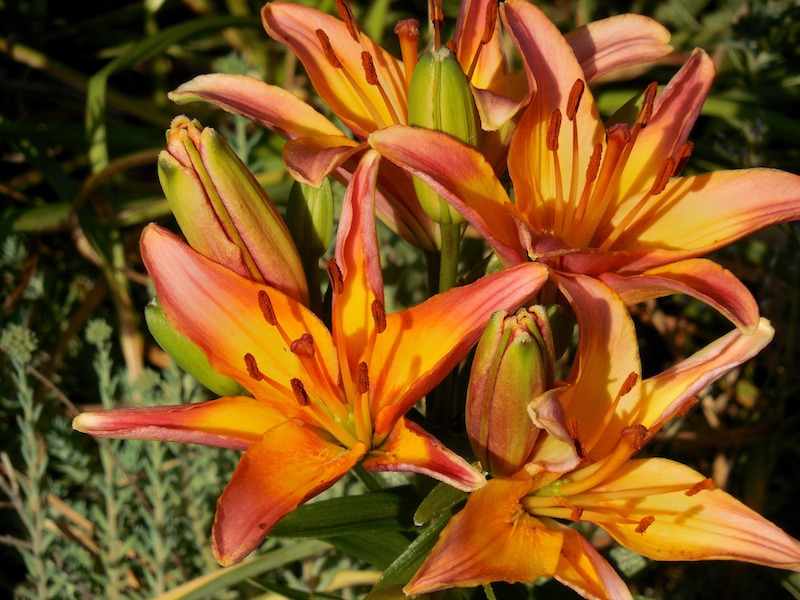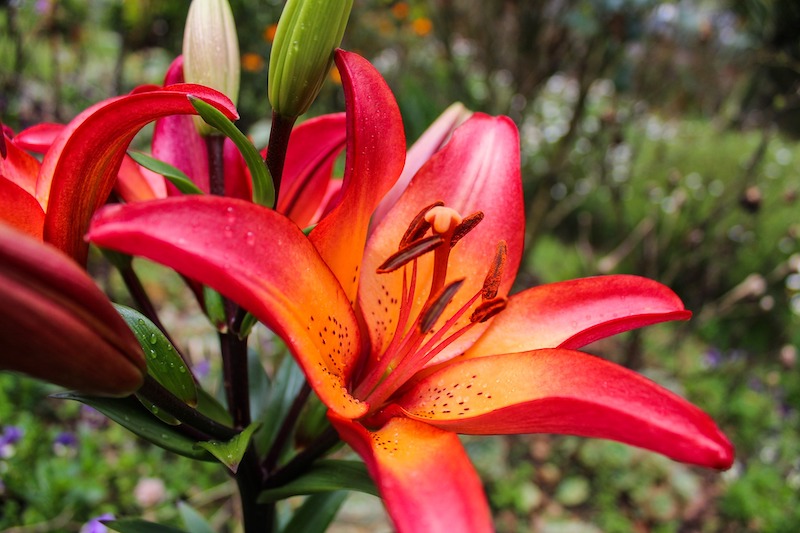Lilium is a genus of flowering bulbs that are often grown in the home garden and known commonly known as lilies. It is important to fertilize lilies to ensure they receive the necessary nutrients for proper growth and health. However, if the lily is native to your area, it may be adapted to the local soil conditions and may not need fertilization. In this case, avoid over-fertilizing and potentially damaging the plant.
It is important to monitor the plant's growth rate and overall health to determine fertilization needs. If the lily appears healthy and is growing in good garden soil, it may not need additional fertilization. However, fertilization may be necessary to boost its growth if the plant struggles or your soil is nutrient deficient.

How to Fertilize Lilies
The roots absorb the nutrients from the soil, so applying the fertilizer to the root zone is important. To determine the specific nutrient needs of your lily plant, perform a soil test to identify any deficiencies. Lilies prefer soil that is slightly acidic or neutral. Once the soil test is complete and you understand the plant's nutrient needs, choose an appropriate fertilizer to address them.
Following the recommended feeding schedule for the specific fertilizer you choose is important to avoid over- or under-fertilizing the plant. Over-watering or under-watering can also affect the plant's ability to absorb nutrients, so monitor the soil moisture and adjust watering as needed.
Additionally, it is important to avoid fertilizer burn, which can occur if too much fertilizer is applied or the plant cannot absorb the nutrients. Liquid synthetic fertilizers are typically stronger than granular organic formulas and are easier to overapply. To avoid fertilizer burn, always follow the recommended application rates and avoid applying the fertilizer directly to the plant's foliage.

Best Time To Fertilize Lilies
Lilies benefit from fertilization in the spring as they begin to actively grow. Depending on the specific needs of your lily plant and the type of fertilizer, you may need to fertilize more than once per year. For example, if you are using a water-soluble fertilizer, it may need to be applied every few weeks during the growing season. However, a slow-release fertilizer may only need to be applied once per year. Use caution with liquid fertilizers, which are quick-acting feeds that can encourage too much leafy growth and stunt blooming.

Best Fertilizer For Lilies
A balanced granular fertilizer with an NPK ratio of 10-10-10 is a good choice for lilies; this provides a mix of nitrogen, phosphorus, and potassium to promote overall plant health and growth at a slow rate. Osmocote Flower and Vegetable Smart-Release Plant Food, 14-14-14, is a good choice for lilies. Apply the feed in spring by scratching the granules into the soil surface when growth emerges. In summer, you can apply a fertilizer with a higher phosphorus ratio to promote flower development. Some gentle organic formulas for bulbs include Dr. Earth 700P Organic 1 Bulb Fertilizer, Espoma Organic Bulb-tone 3-5-3, and Jobe’s Organics Granular Fertilizer For Bulbs. Bone meal is also a nice choice for boosting flower production.
Lilly Fertilizing Tips
- Choose a slow-release fertilizer that contains a balanced mix of nutrients in spring.
- Apply an organic bulb fertilizer before blooming.
- Follow the recommended application rates and frequency for the specific fertilizer you use.
- Water the plants well after applying the fertilizer to help the nutrients reach the roots.
- Avoid over-fertilizing or applying the fertilizer directly to the plant's foliage to avoid fertilizer burn.
Warnings
-Always wear protective gloves and a face mask when handling chemical fertilizers.
-Closely follow all directions and storage guidelines that are on the fertilizer label.
 |
Author Chris Link - Published 1-27-2023 |
